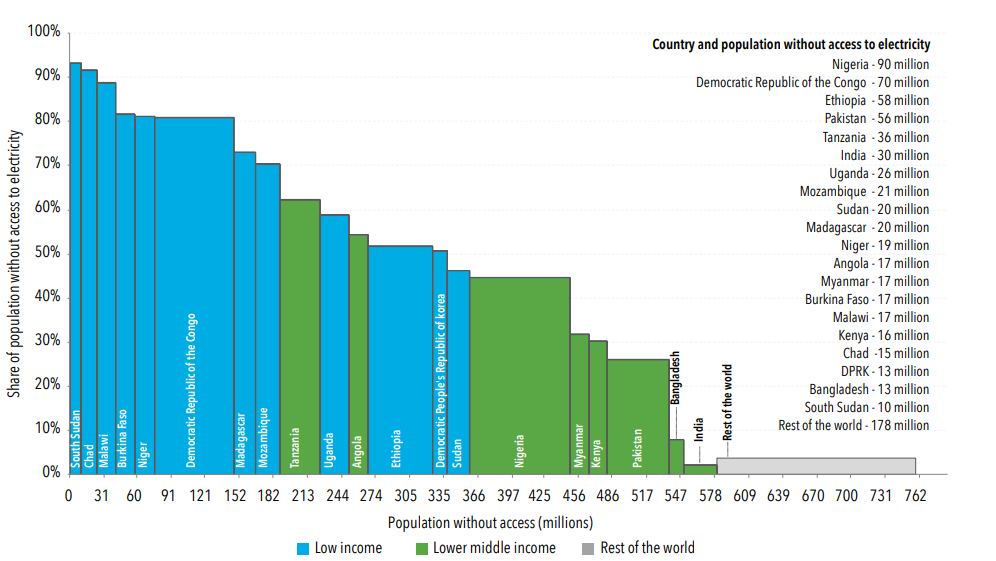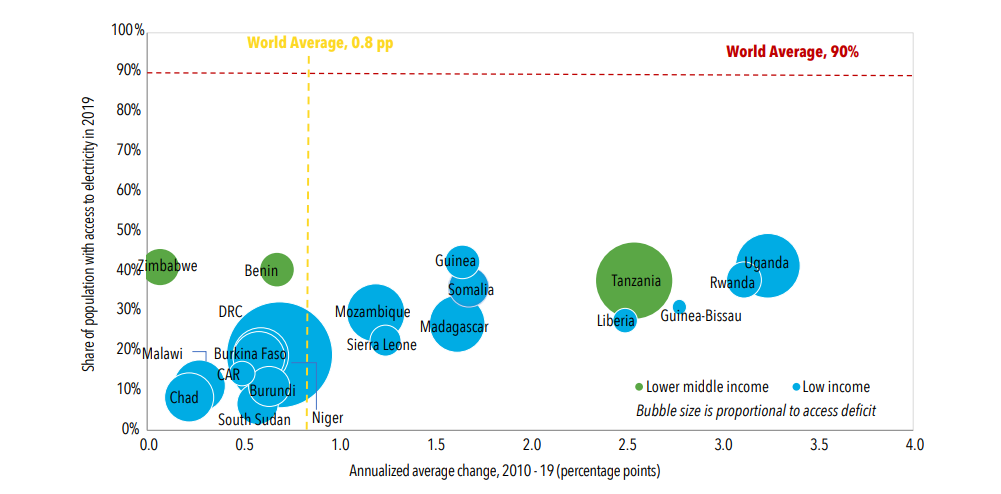- Globally, 759 million people lack access to electricity, and Sub-Saharan Africa accounts for three-quarters of the global population without access.
- The top three largest deficit countries are: Nigeria (90 million), DRC (70 million), and Ethiopia (58 million).
- However, Kenya and Uganda have made the most progress in electrification, as they achieved annual growth in access of more than three percentage points between 2010 and 2019.
A new report published by the International Energy Agency (IEA) revealed that the global population without access to electricity between 2010 and 2019 has dropped from 1.2 billion to 759 million.
The report, which uses data from 2019 and earlier, showed that the global access deficit is increasingly centred on Sub-Saharan Africa, home to 75 per cent of the world’s population without access in 2019. It adds that, with population growth, the absolute deficit in Sub-Saharan Africa has grown since 2010, with 570 million people still lacking access in 2019.
Country Trends
According to the report, in 2019, 76 per cent (580 million) of the world’s unserved population lived in the top 20 access-deficit countries. The top three countries are in Sub-Saharan Africa: Nigeria (90 million), DRC (70 million), and Ethiopia (58 million). India rounded out the top five access-deficit countries, and instead, Tanzania newly joined in 2019.

In Nigeria, where 90 million people lacked access to electricity in 2019 (12 per cent of the global access deficit), the deficit expanded by 1.3 million each year between 2017 and 2019. Nigeria’s access rate grew by 0.8 percentage points each year from 2010 to 2019, not as fast as the total population. As a result, the number of people without access increased by 7 million from 2010, bringing the total deficit to close to 90 million in 2019.
Similarly, for the DRC, the access rate improved by 0.7 percentage points annually over the same period, not enough to keep up with population growth. The population without access in the DRC rose by about 14 million after 2010, reaching 70 million in 2019.
However, among the 20 countries with the largest deficits, Kenya and Uganda have made the most progress in electrification. They achieved annual growth in access of more than three percentage points between 2010 and 2019. Consequently, the access deficits in these countries have shrunk over the past decade.
The report further adds that all of the world’s 20 least-electrified countries are in Sub-Saharan Africa, where a majority of the global unserved population live. South Sudan had the lowest access rate in 2019 (7 per cent), followed by Chad (8 per cent), Burundi (11 per cent), and Malawi (11 per cent).
Uganda’s annualised increase in access of more than three percentage points from 2010 to 2019 was the largest among the 20 countries. Half of the 20 least-electrified countries expanded access at an annual rate greater than the world average between 2010 and 2019.

The report concludes that disruptions related to the pandemic are expected to slow or even reverse progress in electrification as utilities, and off-grid service providers face financial difficulties. “The lack of reliable energy access has already caused health problems as more than 70 per cent of the health facilities in Sub-Saharan Africa have no access to reliable electricity, and one in four has no access at all.
Electrification of health facilities (and other public institutions) is essential for vaccine deployment and storage, as well as broader efforts to mitigate and recover from the pandemic,” it stated.
Pulse





